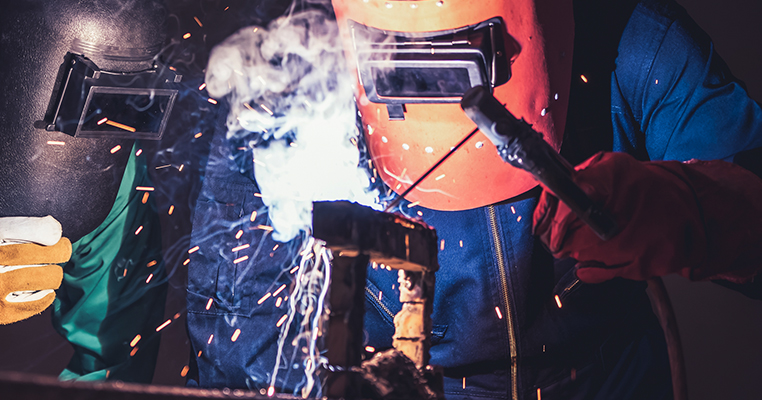Electrode 6013 Welding Techniques and Factory Insights for Optimal Performance and Quality
Understanding the 6013 Electrode Welding Process
Welding is a crucial process in various industrial applications, providing a means to join materials, predominantly metals. The choice of electrode, which is the filler material used in welding, plays a significant role in determining the quality and strength of the weld. Among the wide range of electrodes available, the E6013 electrode is particularly popular due to its versatility and ease of use. In this article, we will delve into the characteristics, applications, and the factory processing involved in producing E6013 electrodes.
What is the E6013 Electrode?
The E6013 electrode is a coated welding rod made of mild steel, characterized by its excellent welding properties. The “E” stands for “electrode”, the first two digits “60” denote the minimum tensile strength of the weld metal in thousands of pounds per square inch (psi), while the last two digits “13” indicate the type of coating and welding position. The E6013 electrode is designed for a wide range of welding positions, including flat, horizontal, and vertical applications.
Key Features of E6013 Electrodes
1. Versatility E6013 electrodes can be used for various applications, including thin-walled structures and lighter materials. They are effective for both AC and DC welding processes, making them suitable for different welding machines.
2. Easy Arc Starting One of the prime advantages of using E6013 electrodes is their ability to start the arc easily, leading to a smoother operation for both novice and experienced welders.
3. Beautiful Appearance The E6013 electrode is known for producing well-finished welds with minimal spatter, making it particularly desirable for applications where aesthetics are important.
4. Weld Quality The slag produced during welding with E6013 is easily removable, allowing for clean welds. This can be beneficial in avoiding potential defects in the weld.
Applications of E6013 Electrodes
The E6013 electrodes find extensive use across various industries. They are commonly employed in
soldadura de electrodo 6013 factory

- Construction For joining steel structures and reinforcing bars. - Automotive In manufacturing various automotive components. - General Fabrication In fabricating tanks, pipes, and other machinery parts. - Maintenance and Repair Due to its compatibility with various base materials, it is widely utilized for repair works.
The Manufacturing Process of E6013 Electrodes
Producing E6013 electrodes involves a meticulous factory process that ensures consistency and quality. The key stages in the manufacturing process include
1. Material Selection High-quality mild steel is selected as the base material for the core of the electrode. The coating materials are chosen based on the desired welding characteristics.
2. Wire Drawing The steel is drawn into fine wire, which will serve as the electrode core.
3. Coating Application The coating is a crucial part of the electrode’s performance. It typically consists of a mixture of chemicals and minerals that facilitate the welding process. The coating is applied evenly around the wire and is then dried to form a solid layer.
4. Quality Control Each batch of E6013 electrodes undergoes rigorous quality control tests. This includes checking the tensile strength, coating uniformity, and arc stability to ensure they meet the required standards.
5. Packaging Once the electrodes pass quality checks, they are packaged securely to prevent damage during transport and storage.
Conclusion
The E6013 electrode stands out as a versatile and reliable choice in the welding industry. Its ease of use, along with the quality of welds produced, makes it a preferred option for many welders, from novices to seasoned professionals. The meticulous manufacturing process ensures that each electrode meets high standards of quality, reinforcing its position in various industrial applications. Whether in construction, automotive, or repair work, the E6013 electrode continues to play a vital role in the world of welding.
-
Best MIG Welding No Gas Flux Core Solution – Easy, Portable & Clean WeldingNewsJul.08,2025
-
7018 Welding Rod 3/16 - High Strength, Low Hydrogen Electrodes Wholesale 3/32 Welding Rod 7018 Suppliers & China 7018 AC Welding Rod FactoryNewsJul.08,2025
-
High Quality MIG Aluminium Welding Wire - Wholesale Factory Prices from China SuppliersNewsJul.07,2025
-
High-Quality Gasless Aluminum Welding Wire China Gasless Aluminum MIG Wire SupplierNewsJul.07,2025
-
High Quality Ordinary Welding Rod for Pipes – Reliable China Welding Rod 7016 SupplierNewsJul.06,2025
-
Welding Wire 0.9 mm ER70S-6 Supplier Wholesale Manufacturers & FactoriesNewsJul.06,2025


